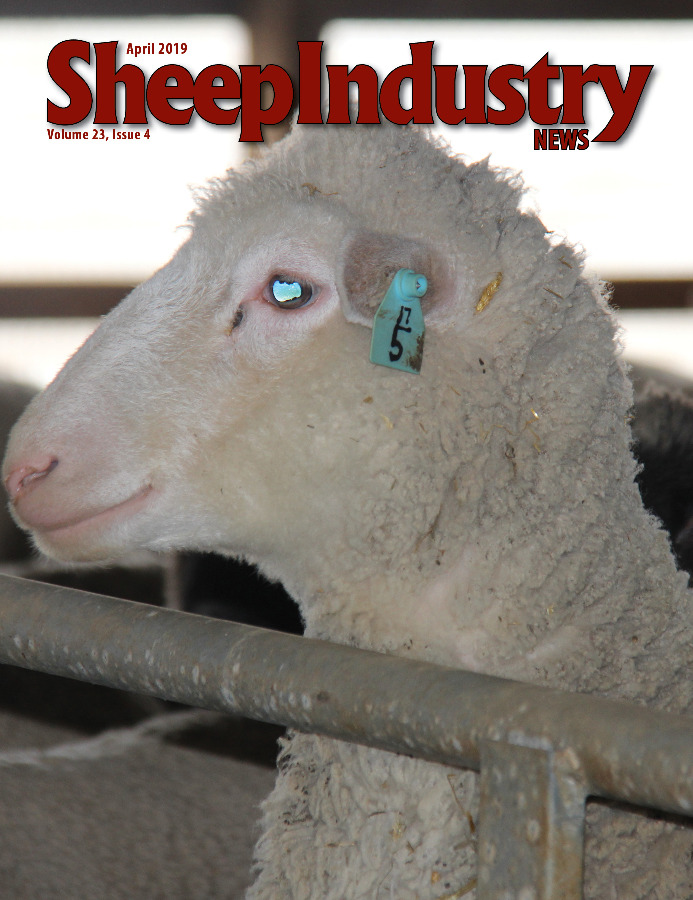
- April 2019
- President’s Notes
- Sheep Producers Flock to Washington, D.C.
- No Turkeys Here
- American Lamb’s Flavor Drives Consumer Choice
- APHIS Announces Plans for Free Scrapie Tags
- ASI Soliciting Nominations for ALB, NSIIC
- Sheep Heritage Scholarship Application Available
- Sheep Health
- Polypay Study Highlights Solution to Parasite Problem
- USSA Adopts Genetic Recovery Program
- Market Report
American Lamb’s Flavor Drives Consumer Choice
What is a major driver for consumers to choose lamb, and in particular American lamb, for a premium? Its unique flavor. This fact has been confirmed in every American Lamb Board consumer study.
The 2015 National Lamb Quality Audit also identified flavor as the most prominent factor defining lamb quality – 71 percent of the lamb purchasers surveyed indicated a willingness to pay a premium for guaranteed eating satisfaction.
ALB believes that providing consistent, high quality, great tasting lamb to consumers is key to creating more demand for American lamb. Following the 2015 National Lamb Quality Audit, ALB set out to better understand how various factors affect lamb flavor, including differences in production background, days on feed, animal age and gender. Starting in 2016, ALB has been working with Colorado State University on a series of innovative research projects designed to help all segments of the industry provide the best-flavored lamb possible.
Now, ALB has decided to proceed with a third phase, building on the findings of Phases I and II. In the upcoming months, researchers will determine if Rapid Evaporative Ionization Mass Spectrometry can identify and sort differences in sheep meat flavor based on specific and detailed consumer preferences, using data correlated to consumer sensory panels.
Differentiating lamb flavor into categories that are meaningful to consumers will improve the industry’s ability to market lamb and increase consumer satisfaction. Phase III is already in the planning process, and will begin during Spring 2019.
ALB Flavor Research Phase I (2016)
Fat and lean compositional differences can be measured using volatile flavor compound analysis, and researchers have been able to associate meat flavor attributes with these methods.
The study identified 50 metabolites responsible for lamb flavor which can be used to predict flavor to be mild or bold, as well as detect off-flavors. This ALB project developed a proof of concept for using these analyses to differentiate lamb flavor and found methods to use them at plant production speeds to segregate lamb carcasses into expected eating quality groups.
ALB Flavor Research Phase II (2018)
With the results of Phase I making it feasible to continue, Phase II was funded at CSU through ALB. Phase II tested the capabilities of REIMS to characterize flavor profiles of various meat tissue types and evaluated its ability to predict carcass characteristics. This study discovered that REIMS is uniquely able to capture high-resolution metabolic profiles faster than other approaches. REIMS – also known by its IKNIFE trade name – essentially burns the surface of a tissue sample to collect a metabolomic fingerprint. By using predictive sensory models developed as part of this phase, off-flavors and carcass characteristics can be identified at a high accuracy.
More importantly, REIMS is able to provide this information in real-time, which makes it an option for being used in harvest facilities without sacrificing necessary line speed. Interestingly, Phase II testing found that lamb favor was not statistically different between lamb, yearling and mutton carcasses. Mutton-like and green/hay-like off-flavor intensities were the most frequently seen issues during testing.
Summary reports of Phase I and Phase II Research are available upon request by emailing rae@americanlamb.com.
The American Lamb Board is an industry-funded national promotion, research and information organization – national checkoff program – that represents all sectors of the American lamb industry including producers, feeders, seedstock producers and processors. The 13-member board – appointed by the Secretary of Agriculture – is focused on increasing demand by promoting the freshness, flavor, nutritional benefits and culinary versatility of American lamb. The work of the American Lamb Board is overseen by the U.S. Department of Agriculture and the board’s programs are supported and implemented by the staff in Denver.
The program is funded through mandatory assessments collected under the federally mandated Lamb Checkoff program. There is a live weight assessment of $0.07 per pound paid by the seller of sheep or lambs and a first handler assessment of $0.42 per head assessment paid by the entity who owns sheep or lambs at the time of slaughter. The assessments are remitted to the American Lamb Board.

